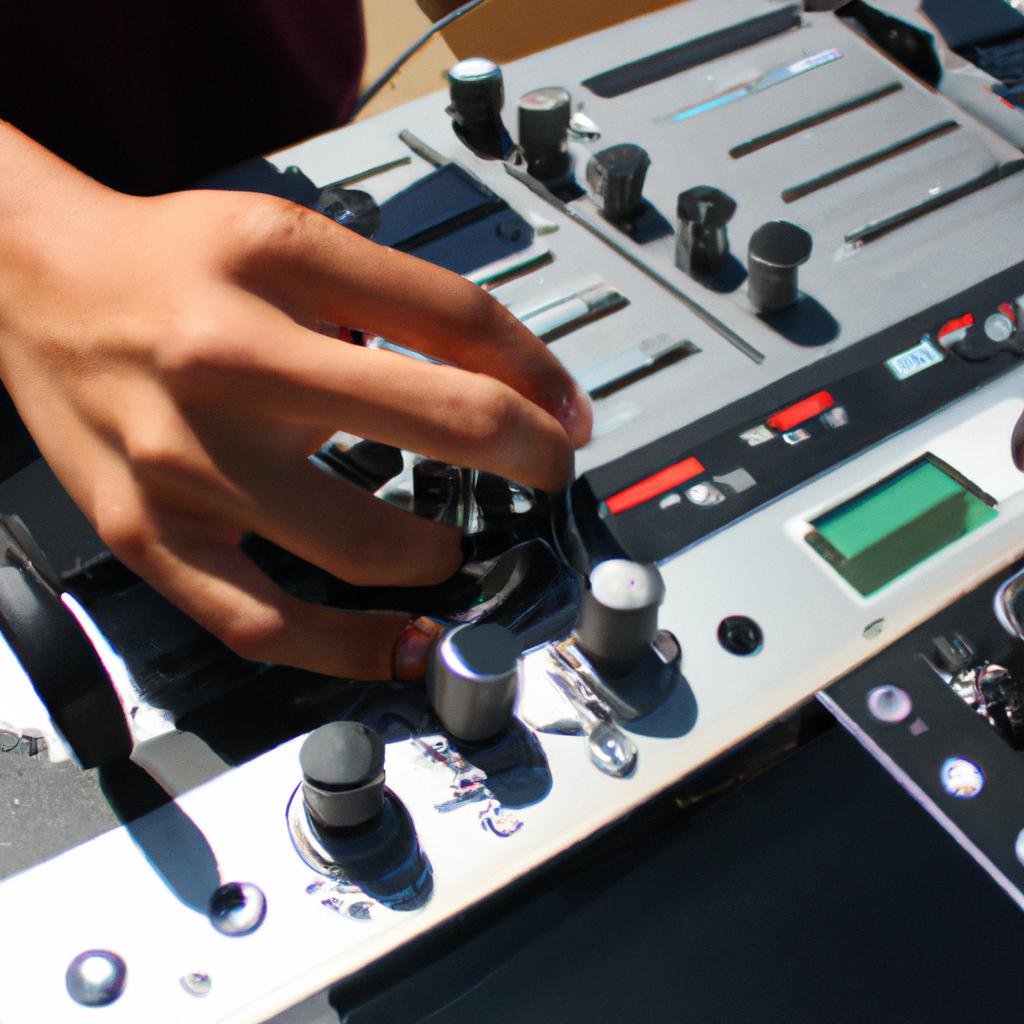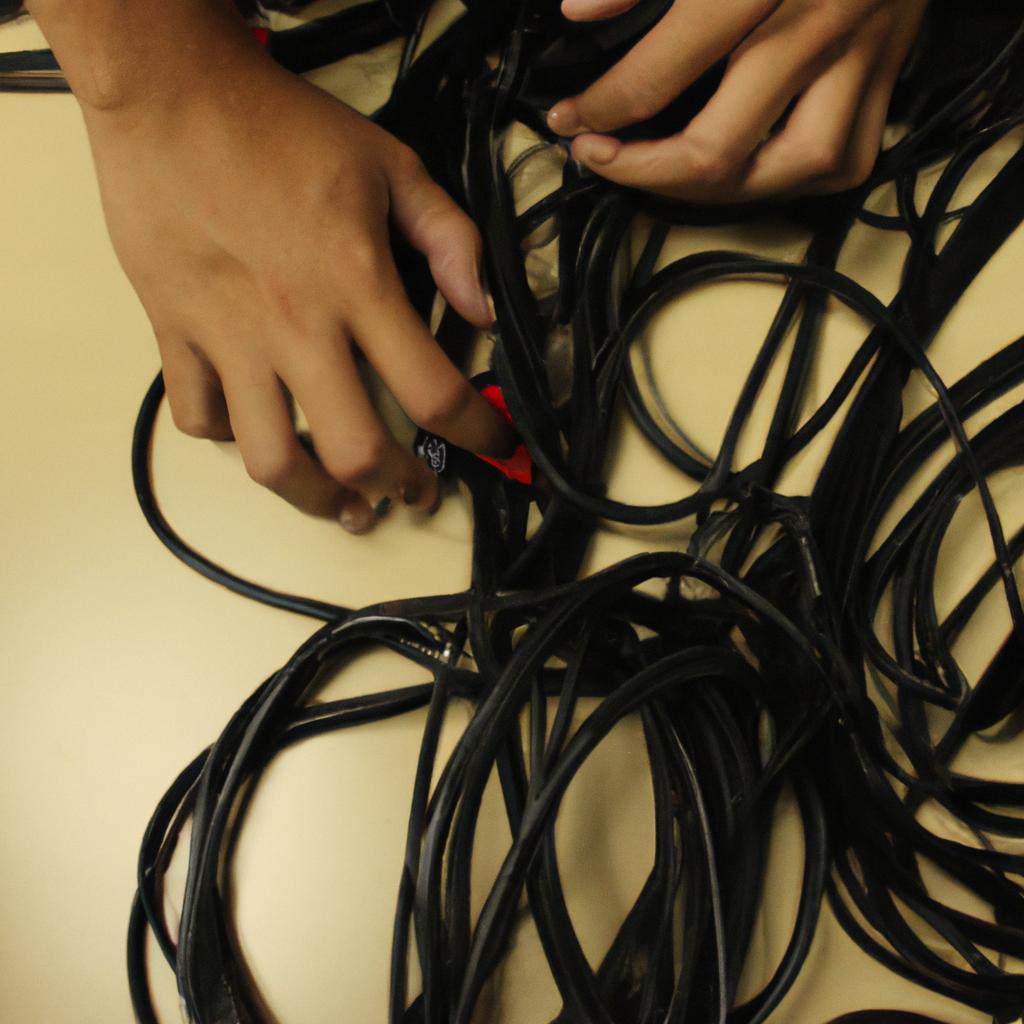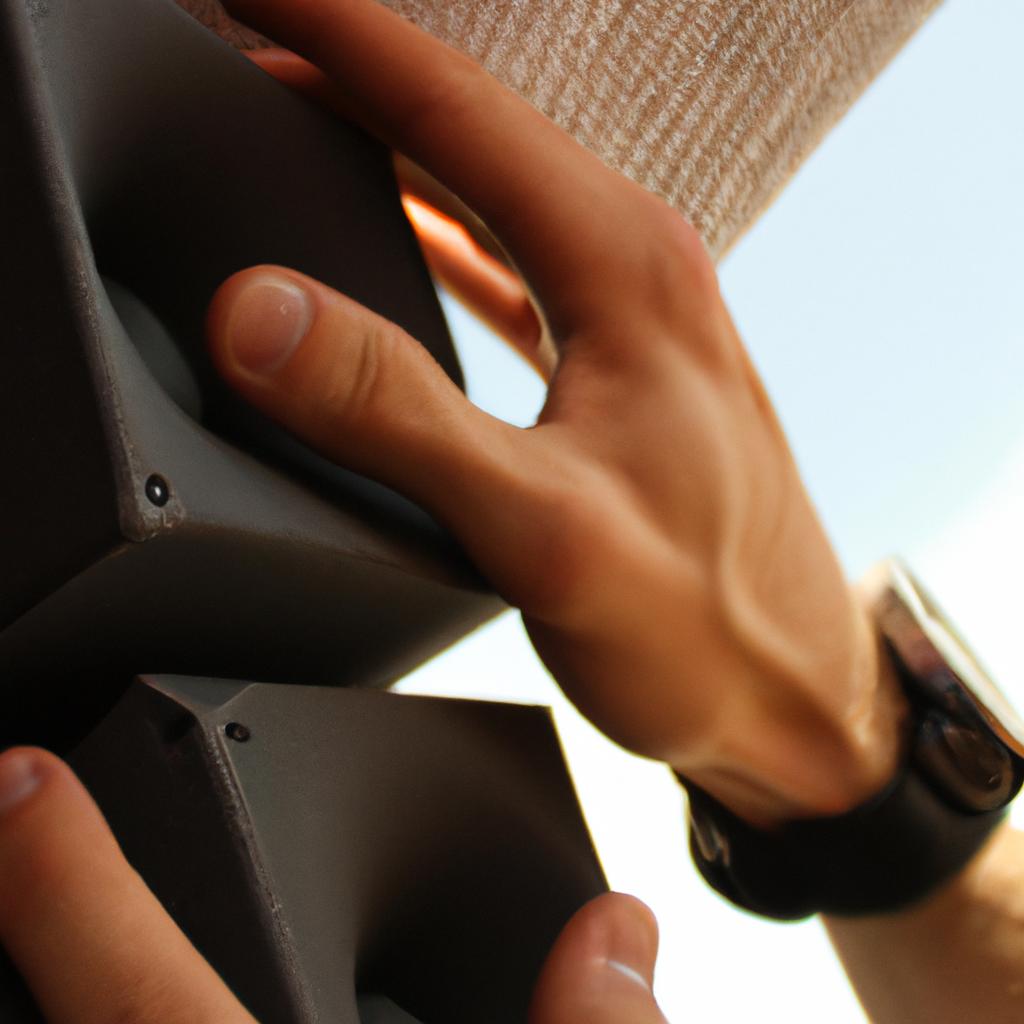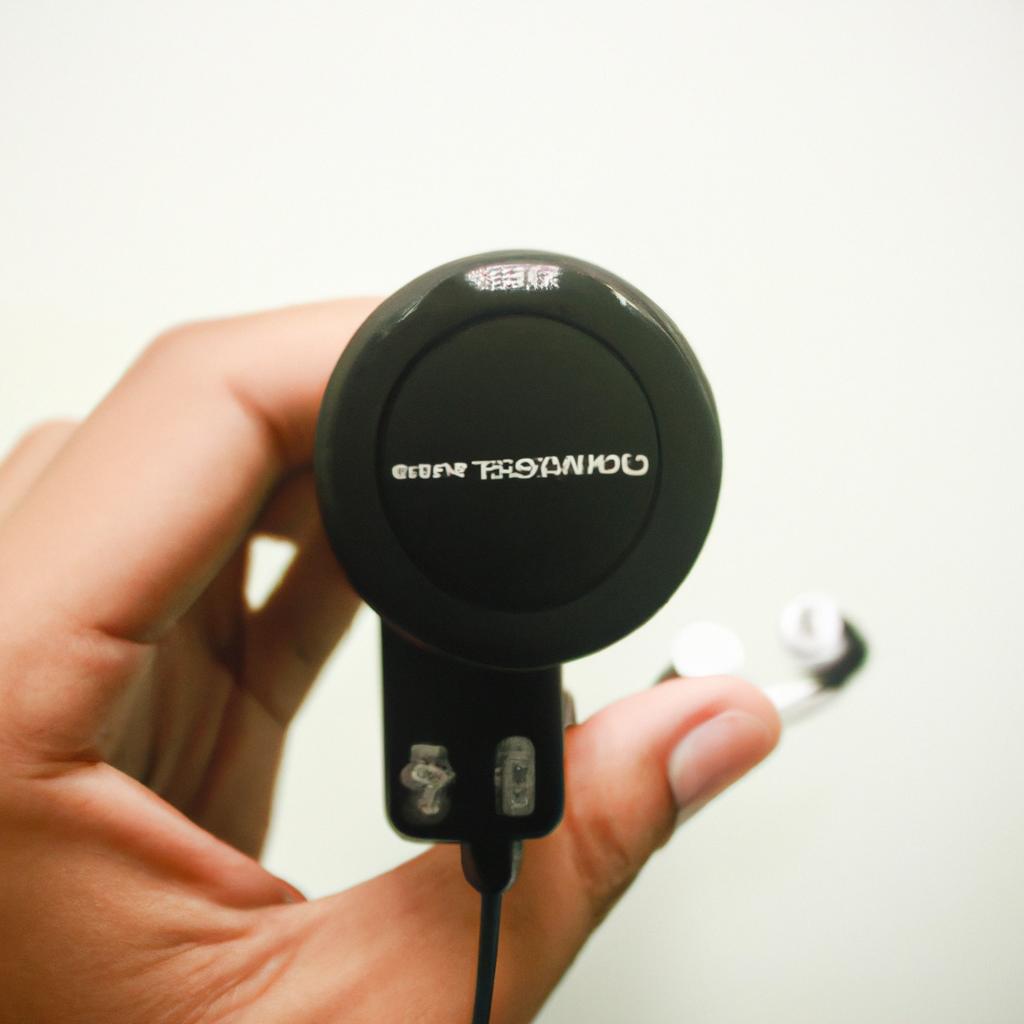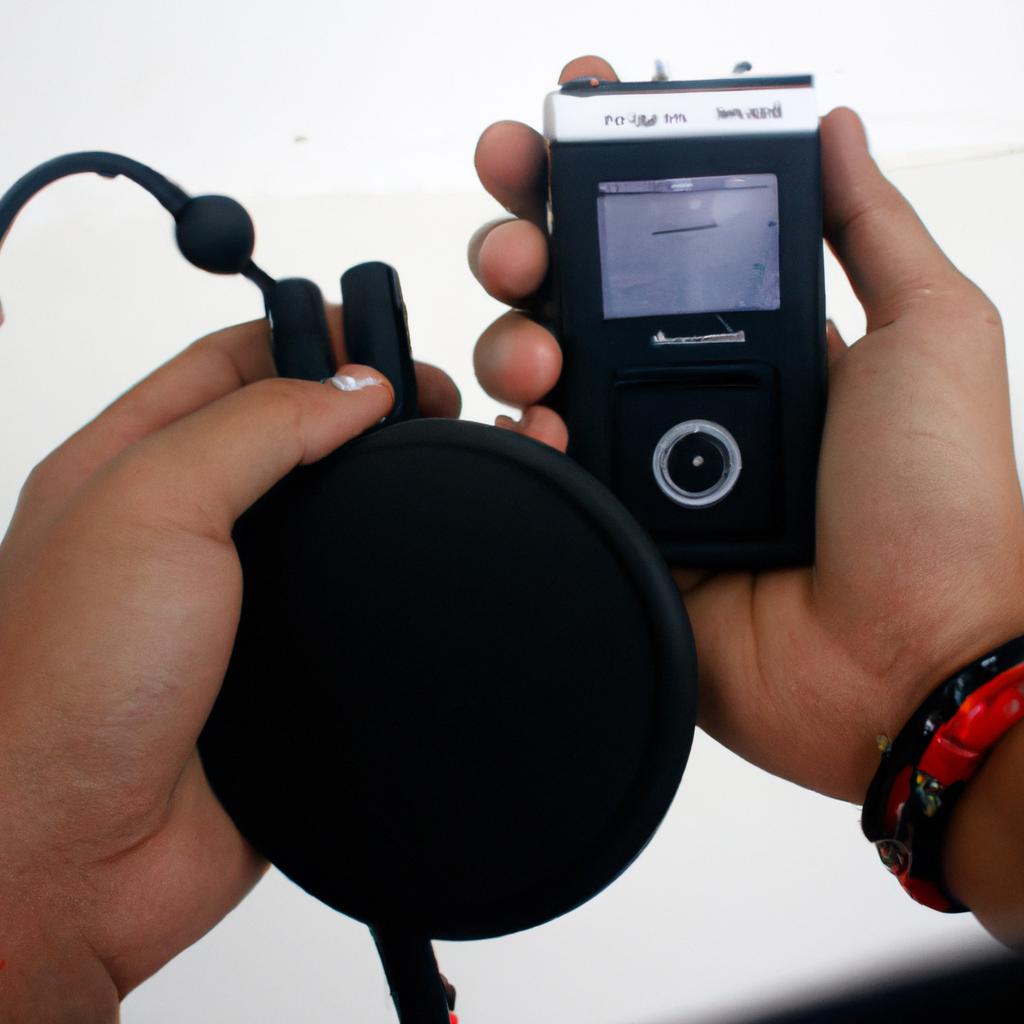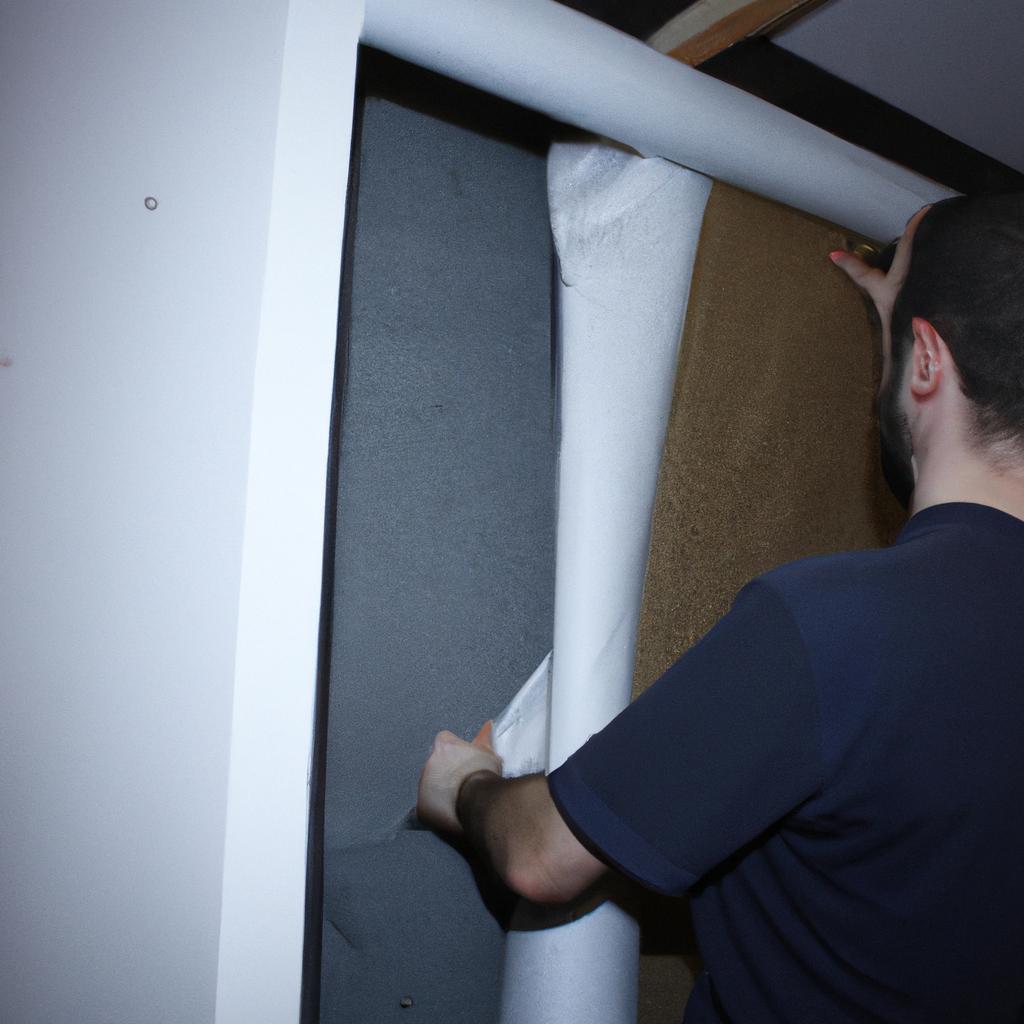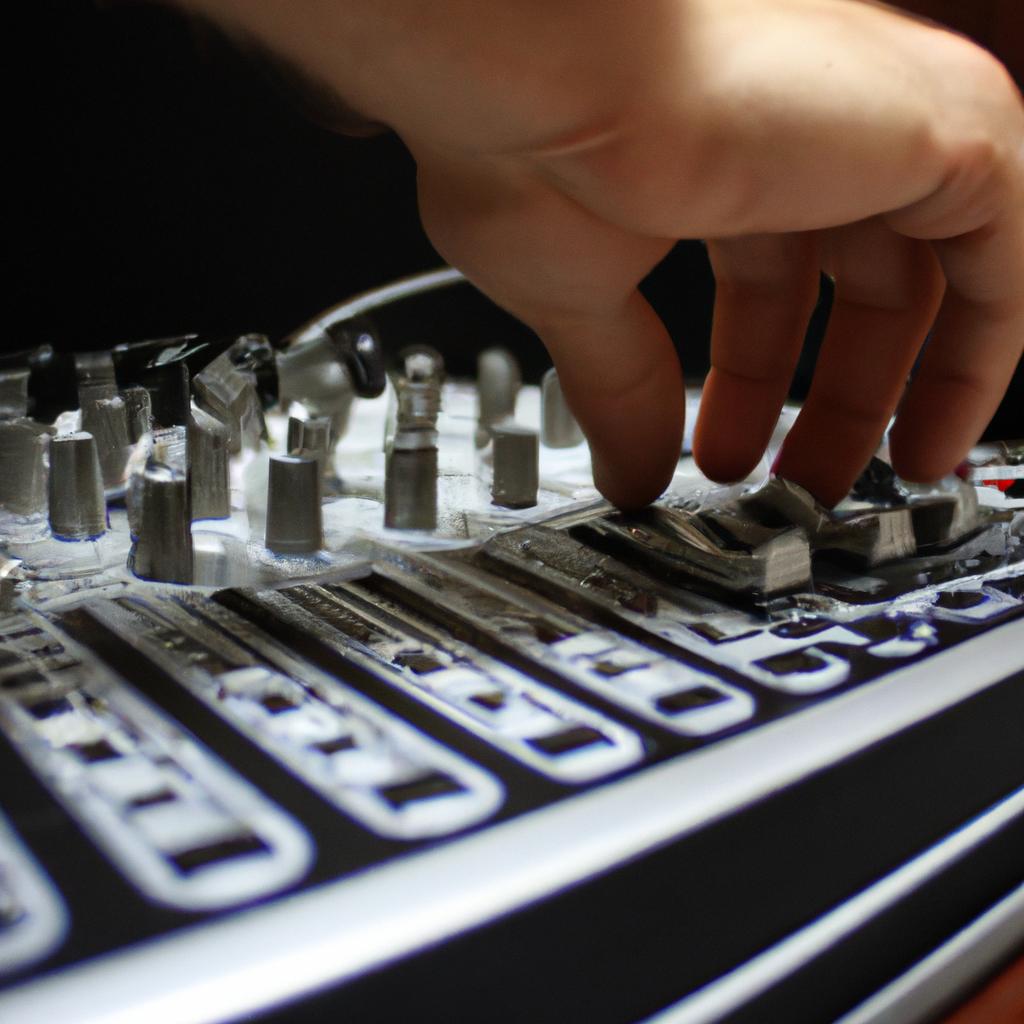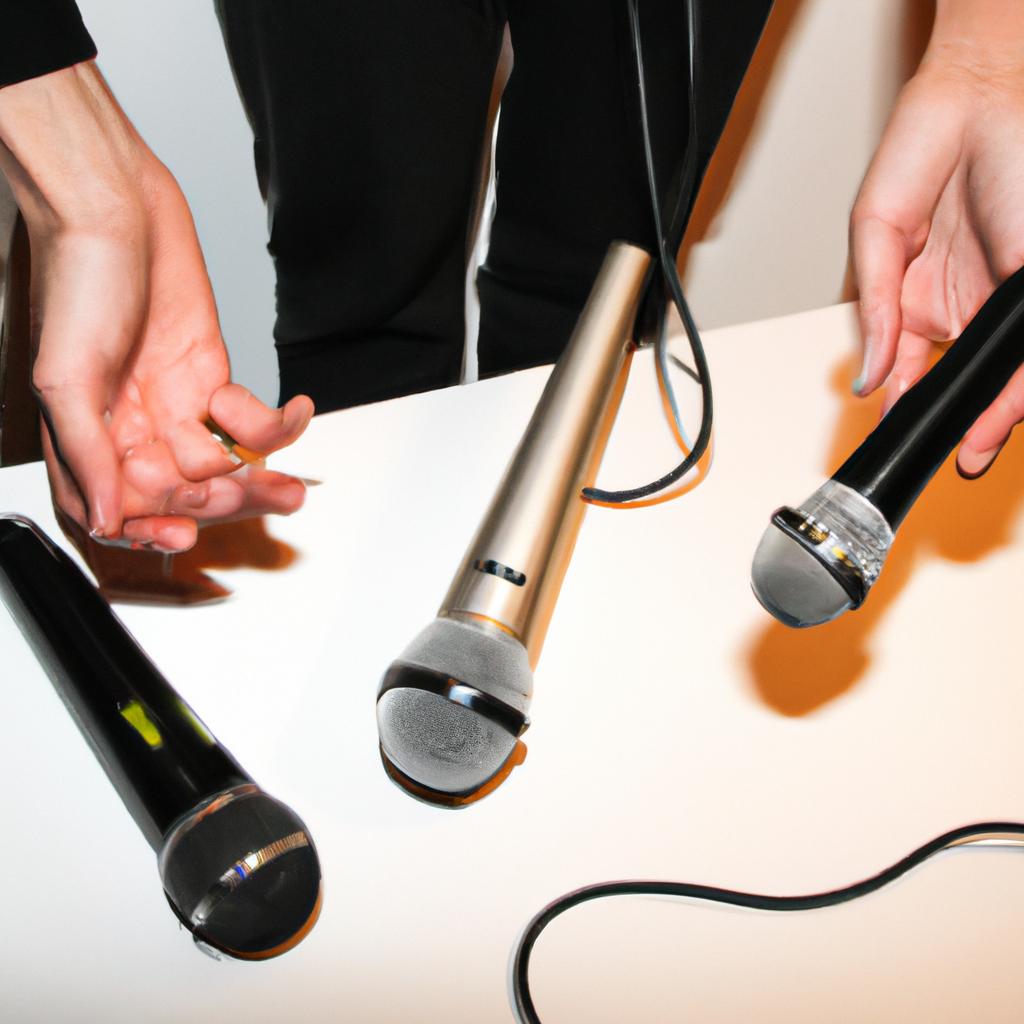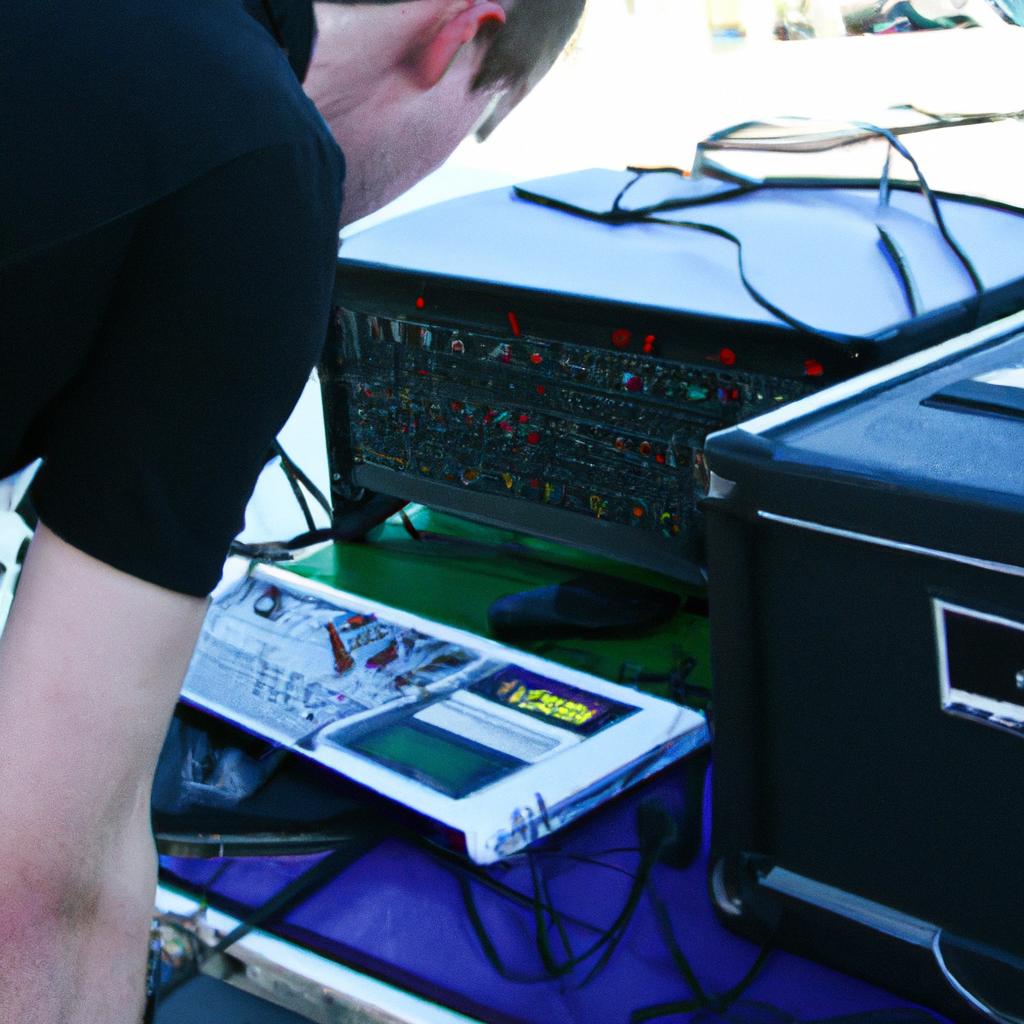Audio calibration is a critical aspect of achieving optimal audio equipment performance in sound and vision systems. Whether it be for professional audio setups or home entertainment systems, precise audio calibration ensures an immersive and accurate listening experience. For instance, imagine watching your favorite action movie on a high-end home theater system with subpar audio calibration. The explosions lack depth and impact, the dialogue sounds muffled, and the overall experience falls short of its true potential.
In this article, we delve into the intricacies of audio calibration to provide readers with a comprehensive guide that will help them unlock the full potential of their audio equipment. From explaining the importance of proper speaker placement to understanding room acoustics and utilizing sophisticated measurement tools, this guide aims to equip individuals with the knowledge necessary to achieve exceptional sound quality.
By following these guidelines, audiophiles and professionals alike can ensure that every note played, every line spoken, and every sound effect reproduced accurately convey the intended emotions and artistic nuances envisioned by content creators. With an emphasis on technical accuracy and scientific methods, this article offers valuable insights into how to calibrate audio systems effectively for enhanced enjoyment across various multimedia platforms.
Understanding Audio Calibration
Imagine sitting in a movie theater, eagerly waiting for the film to begin. As the lights dim and the curtains draw back, you are enveloped by an immersive audio experience that transports you into another world. The crisp dialogue, booming explosions, and subtle whispers create a symphony of sound that enhances your overall cinematic experience. Have you ever wondered how such precision is achieved? This is where audio calibration comes into play.
Audio calibration is the meticulous process of fine-tuning audio equipment to achieve optimal performance. It involves adjusting various settings such as equalization, volume levels, speaker placement, and room acoustics to ensure accurate reproduction of sound. By calibrating audio equipment, one can eliminate distortions, enhance clarity, and achieve a more balanced listening experience.
To comprehend the significance of audio calibration, it is essential to understand its benefits:
- Immersive Soundscapes: Properly calibrated audio equipment can recreate lifelike soundscapes that transport listeners into the heart of their favorite music or films.
- Enhanced Dialogue Clarity: With precise calibration, dialogue becomes crystal clear even amid background noise or intense action sequences.
- Accurate Reproduction: Calibrated speakers accurately reproduce frequencies across the entire audible spectrum without any distortion or coloration.
- Consistent Performance: Regular calibration ensures consistent performance over time by accounting for changes in room conditions or wear and tear on equipment.
These benefits highlight the transformative power of audio calibration. To further grasp its importance, let us explore some key aspects involved in this process through a table:
| Aspect | Importance |
|---|---|
| Equalization | Ensures |
| balanced | |
| frequency | |
| response | |
| Speaker | Determines |
| Placement | optimal |
| positioning | |
| Room | Minimizes |
| Acoustics | reflections |
| and | |
| resonances | |
| Volume | Achieves |
| Level | desired |
| listening | |
| experience |
As shown in the table, each aspect of audio calibration plays a crucial role in achieving optimal performance. Equalization ensures a balanced frequency response, speaker placement determines optimal positioning for sound projection, room acoustics minimize reflections and resonances, while volume level allows users to achieve their desired listening experience.
In light of these considerations, it becomes evident that audio calibration is essential for unlocking the full potential of your audio equipment. In the subsequent section, we will delve deeper into why calibrating audio equipment should be a priority for every audiophile or cinema enthusiast alike.
Importance of Calibrating Audio Equipment
Now that we have explored the concept of audio calibration, let us delve into why it is crucial to calibrate your audio equipment. To illustrate this point, consider a hypothetical scenario where you have just purchased a high-end surround sound system for your home theater. Excitement fills the air as you eagerly set up the speakers and prepare to immerse yourself in an unparalleled audio experience. However, upon playing your favorite movie soundtrack, you notice that something is off – the dialogue sounds muffled, and certain frequencies overpower others. This is where audio calibration becomes essential.
Calibrating your audio equipment ensures optimal performance by fine-tuning various settings to achieve accurate and balanced sound reproduction. Here are some key reasons why calibrating your audio equipment should be a priority:
- Enhanced listening experience: By calibrating your audio equipment, you can enjoy a more immersive and lifelike sound experience. Precise adjustments help eliminate any discrepancies in volume levels or tonal balance, allowing you to hear every detail as intended by the content creators.
- Consistency across different devices: Calibrated audio settings ensure consistent sound quality regardless of the source or playback device used. Whether you’re watching a movie on Blu-ray or streaming music from your smartphone, proper calibration helps maintain fidelity and accuracy throughout.
- Protecting hearing health: Improperly calibrated audio systems often lead users to increase volume levels excessively, seeking clarity or missing frequencies due to imbalance. By achieving accurate calibration, you can listen at comfortable volumes without sacrificing sonic integrity and reduce potential long-term damage to your hearing.
- Maximizing investment: Investing in high-quality audio equipment deserves optimal results. Through proper calibration, you can fully utilize the capabilities of your gear and get the most out of what you’ve acquired.
- Immerse yourself in the rich soundscapes of your favorite movies and music.
- Rediscover hidden nuances and subtleties within audio recordings.
- Feel the excitement and intensity of live performances as if you were there in person.
- Escape into a world of sonic bliss, leaving behind the noise and stress of everyday life.
Additionally, consider this table showcasing how calibration positively impacts different aspects of audio reproduction:
| Aspect | Before Calibration | After Calibration |
|---|---|---|
| Dialogue clarity | Muffled | Clear and intelligible |
| Bass response | Boomy | Well-balanced |
| Soundstage width | Narrow | Expansive |
| Dynamic range | Limited | Wide and dynamic |
As we can see, calibrating your audio equipment has tangible benefits that significantly enhance your overall listening experience. In our next section about “The Calibration Process,” we will explore step-by-step instructions on how to effectively calibrate your audio system without any hassle or confusion. So let’s delve into the intricacies of achieving optimal performance from your audio gear.
The Calibration Process
Section H2: The Calibration Process
Once the importance of calibrating audio equipment has been established, it is essential to understand the process involved in achieving optimal performance. By following a systematic approach, users can ensure that their audio equipment is finely tuned and capable of producing high-quality sound reproduction.
The calibration process typically involves several key steps. Firstly, it is important to measure and adjust the speaker levels within the listening environment. This ensures that each individual speaker produces an equal output level relative to one another, creating a balanced audio experience for the listener. For instance, imagine a home theater setup where one speaker is significantly louder than the others; this imbalance would result in a distorted surround sound effect and diminish overall immersion.
Secondly, equalization plays a crucial role in fine-tuning audio equipment. Equalizers are used to adjust specific frequency ranges, compensating for any deficiencies or excesses in certain areas. A well-calibrated equalizer ensures that all frequencies are reproduced accurately without any distortion or muddiness. To illustrate, consider a scenario where bass-heavy music sounds boomy due to improper adjustments—proper equalization can rectify this issue by attenuating excessive low frequencies.
Furthermore, time alignment is another critical aspect of audio calibration. It involves adjusting delays between speakers so that sound arrives at the listener’s ears simultaneously from all directions. This synchronization enhances imaging and localization accuracy, allowing listeners to perceive sound as intended by content creators. Without proper time alignment, dialogue in movies might appear disjointed from on-screen characters’ movements—a distraction that detracts from the immersive experience.
- Achieve true-to-life sound reproduction
- Enhance movie-watching experiences with precise surround effects
- Maximize clarity and detail in musical performances
- Eliminate distortions and inconsistencies for an immersive auditory journey
In addition, we present you with a table highlighting the benefits of audio calibration:
| Benefits of Audio Calibration |
|---|
| Improved sound accuracy and fidelity |
| Enhanced listening experience |
| Elimination of sonic imperfections |
| Consistent performance across different audio sources |
As we delve into the subsequent section about “Tools for Audio Calibration,” it becomes evident that a precise and carefully executed calibration process is essential to optimize audio equipment performance. By following these steps, users can ensure their systems deliver an immersive and accurate auditory experience, whether it be in home theaters or professional studios.
Tools for Audio Calibration
Transitioning from the previous section, which outlined the calibration process, we now turn our attention to the tools that are essential for audio calibration. Understanding and utilizing these tools effectively is crucial in achieving optimal audio equipment performance. To illustrate their importance, let us consider a hypothetical scenario:
Imagine you have recently purchased a high-end sound system for your home theater. Excitedly setting it up, you eagerly play your favorite movie, only to be disappointed by subpar sound quality. The dialogue sounds muffled, the music lacks clarity, and the overall experience falls short of expectations. This scenario highlights the significance of proper audio calibration.
To ensure accurate calibration, several indispensable tools are employed by professionals in the field. These tools serve as guides in achieving precise adjustments and fine-tuning of audio equipment parameters. Here are some key items commonly used during the audio calibration process:
- Sound Level Meter: A device designed to measure sound pressure levels accurately.
- Test Tone Generator: Provides specific frequencies needed for testing speakers’ frequency response.
- Frequency Analyzer: Enables analysis of various frequencies produced by audio equipment.
- Audio Interface: Allows connection between computer software and external devices for detailed measurements.
In addition to these tools, visual aids can also greatly assist in understanding and adjusting audio parameters effectively. Consider the following table showcasing different EQ settings alongside corresponding emotional responses evoked by each configuration:
| EQ Setting | Emotional Response |
|---|---|
| Flat | Neutral |
| Boosted Bass | Powerful |
| Reduced Treble | Mellow |
| Enhanced Highs | Crisp |
By using such visual representations along with intuitive descriptions like this table provides, users can better grasp how different adjustments affect sound perception on an emotional level.
Understanding the significance of appropriate tool utilization and incorporating visual aids paves the way toward realizing optimal audio performance. In our subsequent section about “Tips for Optimal Audio Calibration,” we will delve into practical guidelines to further enhance the calibration process, enabling you to maximize your audio experience.
Tips for Optimal Audio Calibration
Transitioning from the previous section on tools for audio calibration, let us now delve into some valuable tips that can help you achieve optimal audio calibration. By following these guidelines, you will be able to maximize the performance of your audio equipment and enhance your overall listening experience.
To illustrate the importance of proper audio calibration, consider a hypothetical scenario where a home theater enthusiast has invested in high-quality speakers but is dissatisfied with the sound quality. Despite having all the necessary tools for calibration, they struggle to achieve an immersive audio experience. This example emphasizes the significance of understanding and implementing effective techniques for optimal audio calibration.
Here are four essential tips to guide you towards achieving ideal audio calibration:
-
Room Acoustics: Pay attention to the acoustics of your listening space as it greatly affects sound quality. Consider using acoustic treatments such as diffusers or absorbers to reduce unwanted reflections and echoes.
-
Speaker Placement: Proper placement of speakers plays a crucial role in optimizing sound reproduction. Experiment with different positions and angles while considering factors like distance from walls, listener position, and speaker height.
-
Subwoofer Integration: Correctly integrating a subwoofer enhances low-frequency response within your listening environment. Experiment with positioning options and use room correction software if available to ensure seamless integration with other speakers.
-
Calibration Software: Utilize professional-grade calibration software to fine-tune various parameters such as equalization, phase alignment, and time delay settings. These tools provide precise adjustments tailored to your specific setup for optimal sonic performance.
Let’s explore further by examining this table highlighting the emotional impact achieved through proper audio calibration:
| Emotional Impact | Scenario |
|---|---|
| Immersion | Imagine being transported into a live concert right from your living room as every instrument resonates harmoniously around you. |
| Excitement | Feel the adrenaline rush when watching action-packed movie scenes with accurately reproduced explosions and dynamic surround effects. |
| Serenity | Experience a peaceful oasis as you listen to your favorite classical music with every delicate note and subtle nuance delicately rendered. |
| Nostalgia | Rekindle fond memories by hearing the warmth of vinyl records or rediscover old songs that evoke strong emotions through precise audio reproduction. |
By following these tips, you can achieve optimal audio calibration and unlock the full potential of your sound system. In our next section, we will explore the benefits that proper audio calibration brings to both audiophiles and casual listeners alike.
Transitioning into the subsequent section about “Benefits of Proper Audio Calibration,” let us now discover how implementing effective techniques for optimal audio calibration can significantly enhance your listening experience.
Benefits of Proper Audio Calibration
Section H2: Benefits of Proper Audio Calibration
Transitioning from the previous section’s discussion on tips for optimal audio calibration, it is important to understand the various benefits that can be achieved through proper audio calibration. By calibrating your audio equipment accurately, you can enhance your overall sound experience and maximize the performance capabilities of your devices.
Imagine a scenario where a home theater enthusiast invests in high-quality speakers and an advanced AV receiver but fails to properly calibrate the system. In this case, despite having top-of-the-line equipment, they may experience subpar audio quality with imbalanced frequencies or distorted sound reproduction. However, by following the principles of proper audio calibration, one can avoid such issues and unlock several key benefits:
-
Enhanced Sound Quality: Through precise audio calibration techniques, you can achieve accurate frequency response, improved tonal balance, and reduced distortion levels. This will result in a more immersive listening experience where each instrument or vocal element is reproduced faithfully and clearly.
-
Improved Dialog Intelligibility: Audio calibration allows for better dialogue clarity in movies and TV shows. By fine-tuning the center channel speaker’s volume level and equalization settings, dialogues become more intelligible even amidst complex background scores or action sequences.
-
Consistent Sound Experience: Calibrating your audio setup ensures consistency across different media sources (such as Blu-ray discs, streaming platforms, gaming consoles) and content genres (movies, music, games). This means that regardless of what you’re watching or listening to, you’ll always have a well-balanced and optimized sound output.
-
Protection of Speaker Equipment: Improperly calibrated systems often lead to excessive strain on speakers due to unnecessary amplification or incorrect crossover settings. With correct calibration procedures in place, you can safeguard your expensive speakers from potential damage caused by overdriving them.
To further illustrate these benefits visually:
| Benefit | Description |
|---|---|
| Enhanced Sound Quality | Achieve accurate frequency response, better tonal balance, and reduced distortion levels. |
| Improved Dialog Intelligibility | Enhance dialog clarity amidst complex audio tracks or action sequences. |
| Consistent Sound Experience | Ensure a well-balanced sound output across different media sources and content genres. |
| Protection of Speaker Equipment | Safeguard your speakers from damage caused by improper calibration settings. |
In conclusion, the benefits derived from proper audio calibration are numerous and significant. By taking the time to calibrate your audio equipment accurately, you can elevate your listening experience to new heights, ensuring optimal performance and fidelity in all aspects of sound reproduction. Embrace the potential that lies within your audio devices through precise calibration techniques, and immerse yourself in a world of captivating soundscapes.

